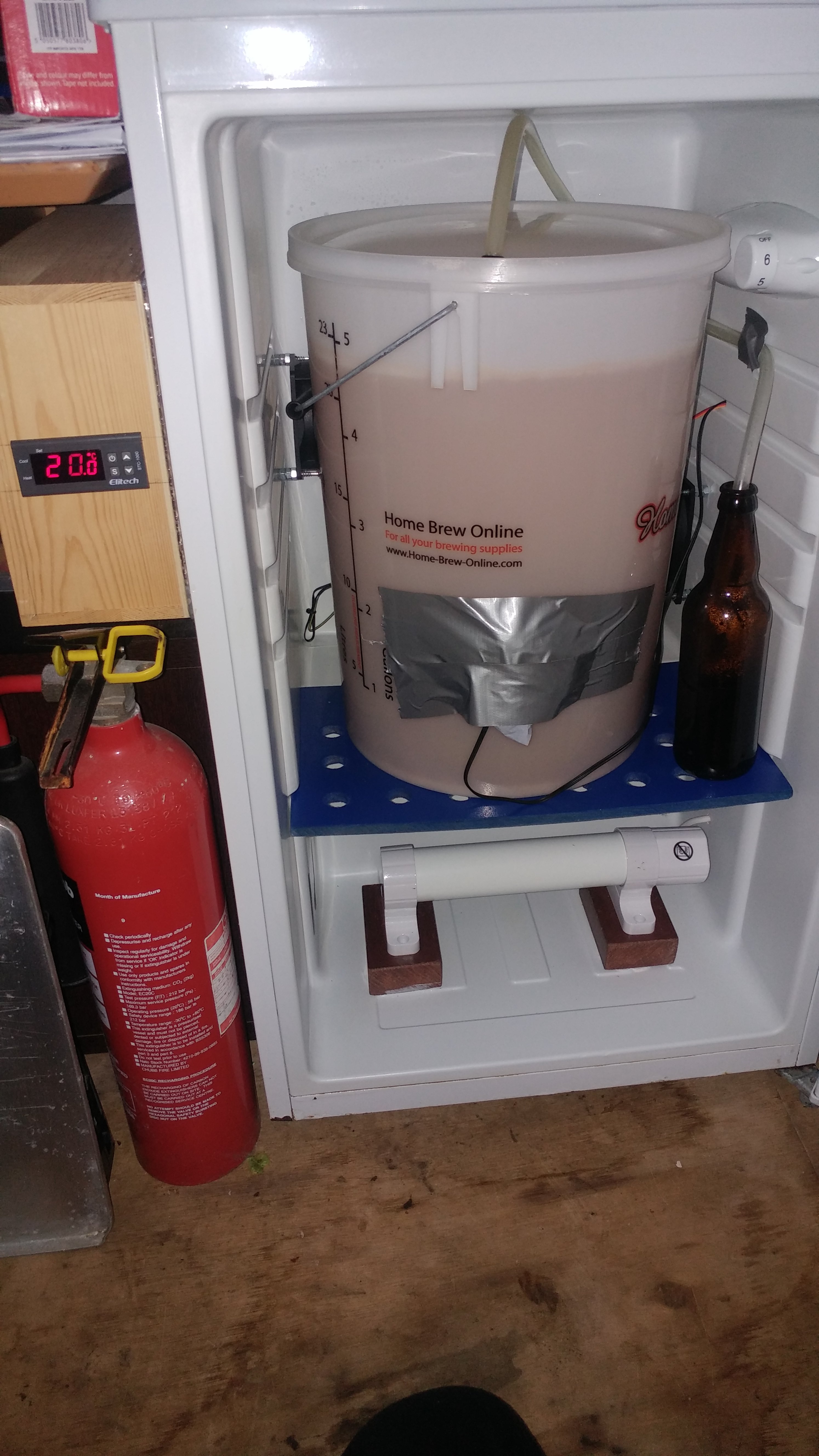Kris Brew
Active Member
- Joined
- Aug 11, 2018
- Messages
- 25
- Reaction score
- 10
Hi All,
I am new to home brewing, tried a small batch from a kit my bro bought me... it didn't pan out quite right however i really enjoyed what i was doing but had inadequate kit which made everything difficult (pots too small, tiny hob ect..) so i have set myself up with Gas Burner, DIY Keggle, large BIAB BAG and Fermentation Fridge.
I have been given roughly 200g of homegrown cascade hops which i dried, vac packed and put in the freezer about three weeks ago, so i am planning to use these to make my first SMASH IPA as if it goes wrong it won't hit my pocket so hard!
The recipe i have found is in this link https://learn.kegerator.com/recipe-cascade-smash-pale-ale/
I am planning to follow the hop quantities and ordered 410g of simpsons golden promise pale ale malt along with Safale US-05 last night.
I want to end up with 21 - 25L of wort in my FV at the end but am unsure of correct quantities of of water to use, i have searched and searched the tinterwebs to which i have found myself feeling more confused.
Any help/advice would be much appreciated, Thank you in advance!
I am new to home brewing, tried a small batch from a kit my bro bought me... it didn't pan out quite right however i really enjoyed what i was doing but had inadequate kit which made everything difficult (pots too small, tiny hob ect..) so i have set myself up with Gas Burner, DIY Keggle, large BIAB BAG and Fermentation Fridge.
I have been given roughly 200g of homegrown cascade hops which i dried, vac packed and put in the freezer about three weeks ago, so i am planning to use these to make my first SMASH IPA as if it goes wrong it won't hit my pocket so hard!
The recipe i have found is in this link https://learn.kegerator.com/recipe-cascade-smash-pale-ale/
I am planning to follow the hop quantities and ordered 410g of simpsons golden promise pale ale malt along with Safale US-05 last night.
I want to end up with 21 - 25L of wort in my FV at the end but am unsure of correct quantities of of water to use, i have searched and searched the tinterwebs to which i have found myself feeling more confused.
Any help/advice would be much appreciated, Thank you in advance!

























![Craft A Brew - Safale BE-256 Yeast - Fermentis - Belgian Ale Dry Yeast - For Belgian & Strong Ales - Ingredients for Home Brewing - Beer Making Supplies - [3 Pack]](https://m.media-amazon.com/images/I/51bcKEwQmWL._SL500_.jpg)






















 followed the hop schedule and added half a protafloc tab at the 15min addition. Cooled and racked off the wort into my FV (bucket), everything sterilized, also used a strainer bag to help oxygenate and collect unwanted hops ect..
followed the hop schedule and added half a protafloc tab at the 15min addition. Cooled and racked off the wort into my FV (bucket), everything sterilized, also used a strainer bag to help oxygenate and collect unwanted hops ect.. Prior to leaving the house i took the FV out, left the lid on and gave it a shake around which i am hoping will help get it going... is there something i have done wrong or am i just being a bit impatient?
Prior to leaving the house i took the FV out, left the lid on and gave it a shake around which i am hoping will help get it going... is there something i have done wrong or am i just being a bit impatient?
